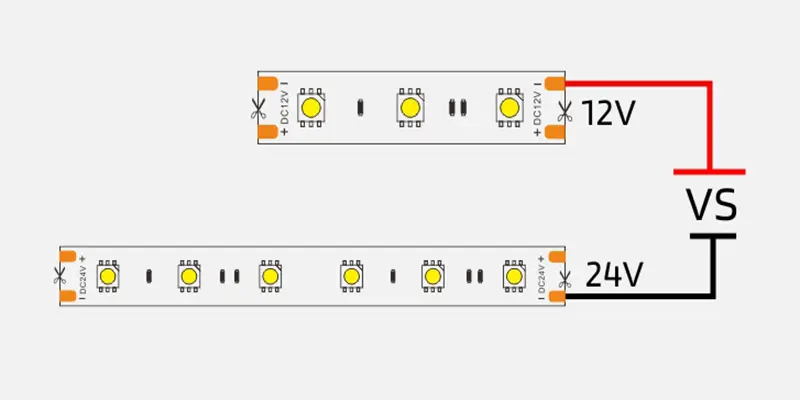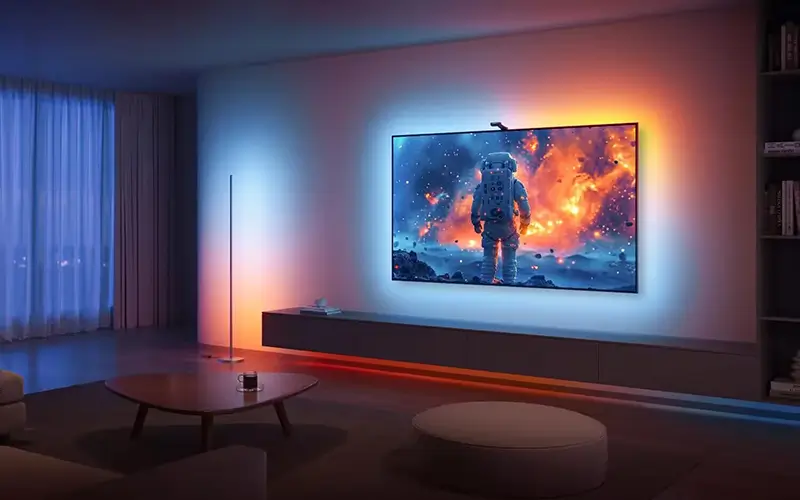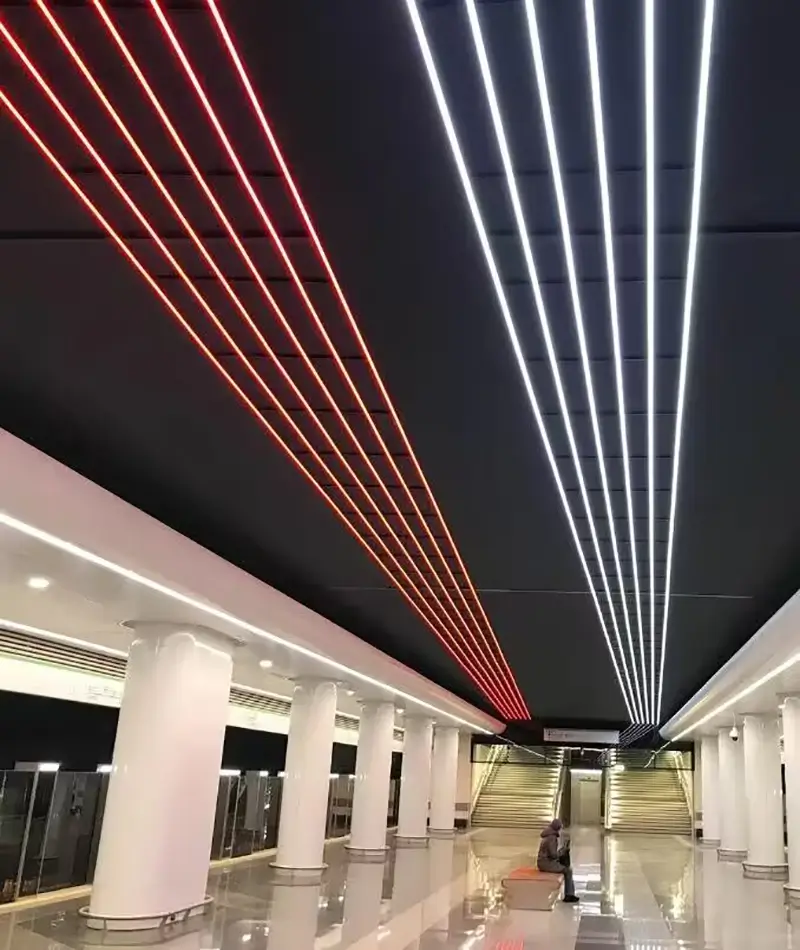
If you are considering purchasing a low-voltage LED strip lighting system, you may come across 12V DC vs. 24V DC LED Strip lights options. It is a key factor is choosing between 12V and 24V options. Each voltage has its advantages and considerations, depending on the specific needs and preferences of your lighting project.
In this article, we’ll explore the differences between constant voltage 12V vs. 24V LED strip, the advantages of 12V and 24V LED strips, and how to choose the right voltage LED strip.
What are 12V and 24V LED Strip Lights?
Most of our LED strips and neon strip are available in 12V DC and 24V DC voltages. You need to choose the correct voltage based on your wattage, and then choose the correct accessories (such as a power supply), the difference between 12V DC and 24V DC is not very significant.
- 12V DC LED strip with shorter cutting line spacing. This gives you more flexibility in cutting the LED strip to the desired length.
- 24V DC LED strip, suitable for various lighting projects and compatible with all kinds of lighting. At the same time, it also reduces the possibility of voltage drops.
Advantages of 12V LED Strip Lights
12v LED strips are ideal for projects that require shorter cutting increments due to space issues. Therefore, if you are working in a small space such as a car or boat, 12V is the best choice. Plus, they come with their own integrated power supply, making installation a breeze.
Advantages of 24V LED Light Strips
24V LED strips excel in projects that require longer distances. Because of the higher voltage, you can run fairly long LED strips without worrying about annoying voltage drops. You can use thinner wire, which is not only cheaper but easier to handle.
When to Use 12V vs. 24V LED Strip Lights?
The debate between 12V and 24V lighting systems has been around for a long time. It mainly depends on your engineering needs. Here are the main considerations when choosing LED strip lights:
12V LED strip lights
First, you need to know that lower voltage means higher current, which can cause voltage drops over long periods.

- Ideal for shorter runs or installations with limited space.
- Commonly used in automotive lighting, small DIY projects, and accent lighting applications.
- Smaller power supplies can be used which are more cost effective for smaller setups.
24V LED strip lights?
24V voltage would be more practical. The higher voltage allows for longer run times with minimal voltage drop, making it ideal for large lighting installations.

- Better suited for commercial or architectural lighting projects that require consistent brightness.
- Reducing the current load reduces heat generation and increases efficiency.
- Requires larger transformer or power supply, but provides greater expansion flexibility.
How to Choose the 12V vs. 24V LED Strip Lights?
To better choose the correct voltage LED light strip, you can consider the following details, which can help you find a more suitable voltage.
Compatibility
Both 12V LED vs. 24V LED strip operate at low voltage. All are compatible with a variety of controllers and dimmers. Make sure the controller or dimmer has the appropriate voltage rating to avoid damaging the LED strip.
Connectivity
12V LED vs. 24V LED Strip Lights: 12V LED strips have lower voltage and they are generally better suited for shorter runs. And 24V LED light strips are great for creating longer lighting periods without a noticeable drop in brightness. They are ideal for large installations.
Voltage drops considerations
A voltage drop occurs when the voltage drops along the length of the LED strip. 24V LED strips have a smaller voltage drop than 12V options, making them better suited for longer installations.
Cost considerations
12V LED strips require less power, so the upfront price may be more affordable. But consider long-term costs and scalability. 24V LED strips may be better suited for run lengths and larger projects, offering better performance and scalability.
Application details
Consider the specific requirements and purpose of your lighting project, including run length, brightness requirements and available power. to determine the voltage option best suited for your application.
Summary
When choosing between 12V vs. 24V LED strip lights, there are some details to consider. Factors such as installation purpose, installation size, pressure drop considerations, compatibility with controllers, and long-term cost considerations. Please consider the advantages and limitations of each voltage option to make an informed decision. We are an LED strip lights factory, please contact us with any needs.
FAQs
The main difference is the voltage requirements. 12V LED strips operate on 12 volts, while 24V LED strips operate on 24 volts. Again this affects things like brightness, voltage drop, and compatibility with power supplies and controllers.
12V LED light strips are ideal for smaller installations or projects where space is limited. They are commonly used for automotive lighting, small DIY projects, and accent lighting applications. If your project requires shorter run times or doesn’t have to worry about voltage drop, a 12V LED strip may be a better choice.
24V LED light strips are ideal for large lighting or projects that require longer run times. They are more suitable for commercial or architectural lighting applications. In these applications, consistent brightness over long distances is critical. If you are planning a larger installation or need to cover longer distances without significant voltage drops, 24V LED strips are recommended.
Higher voltage (24V) LED strips generally maintain brightness more consistently over longer distances than lower voltage (12V) options. This is due to reduced voltage drop and reduced current loading, resulting in improved performance and efficiency.
A voltage drop occurs when the voltage drops along the length of the LED strip. It causes dimming sections at the end of longer runs. 24V LED strips have a smaller voltage drop than 12V options, making them better suited for longer installations where consistent brightness is important.
